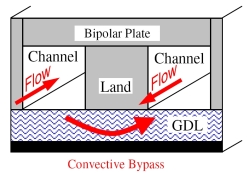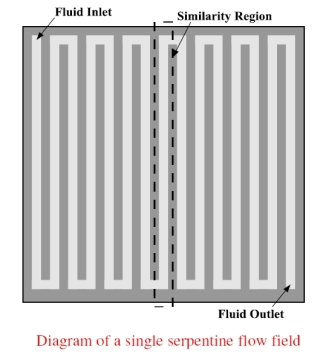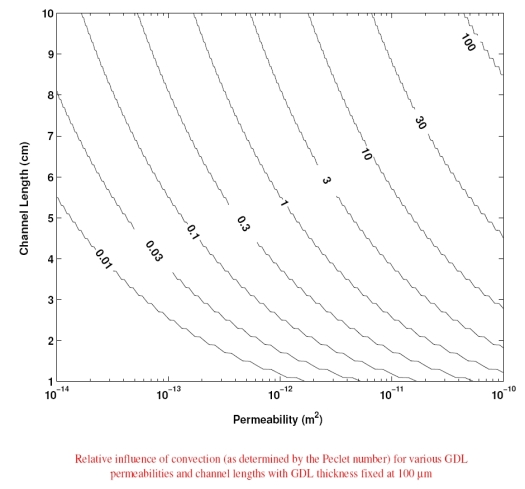Power losses associated
with slow reaction kinetics and mass-transport limits in PEM fuel
cells
can be strongly influenced by convective flow characteristics.
Specifically, convection in the form of channel bypass may be utilized
to simultaneously increase reactant concentration and reduce product
concentration in the catalyst layer, thus reducing the activation and
mass-transport overpotentials. We have developed an analytical model to
predict the flow pattern and pressure field in general
single-serpentine flow field geometries.
mass-transport limits in PEM fuel
cells
can be strongly influenced by convective flow characteristics.
Specifically, convection in the form of channel bypass may be utilized
to simultaneously increase reactant concentration and reduce product
concentration in the catalyst layer, thus reducing the activation and
mass-transport overpotentials. We have developed an analytical model to
predict the flow pattern and pressure field in general
single-serpentine flow field geometries.

Using the equations of continuity, viscous losses in channel flow, and Darcy flow for convective bypass, it is possible to solve for the pressure along a given serpentine channel as:




The model predicts that a significant portion of the total flow through the fuel cell can occur as in-plane convective flow through the gas diffusion layer under realistic operating conditions. The relative influence of convection depends highly on in-plane permeability of the gas diffusion layer and channel length, and is relatively independent of gas diffusion layer thickness. The Peclet number is used to quantify the relative importance of convection over diffusion:


By designing fuel cells to utilize enhanced in-plane convection, it is suggested that losses associated with low oxygen content as well as liquid water buildup in the catalyst layer can be reduced.